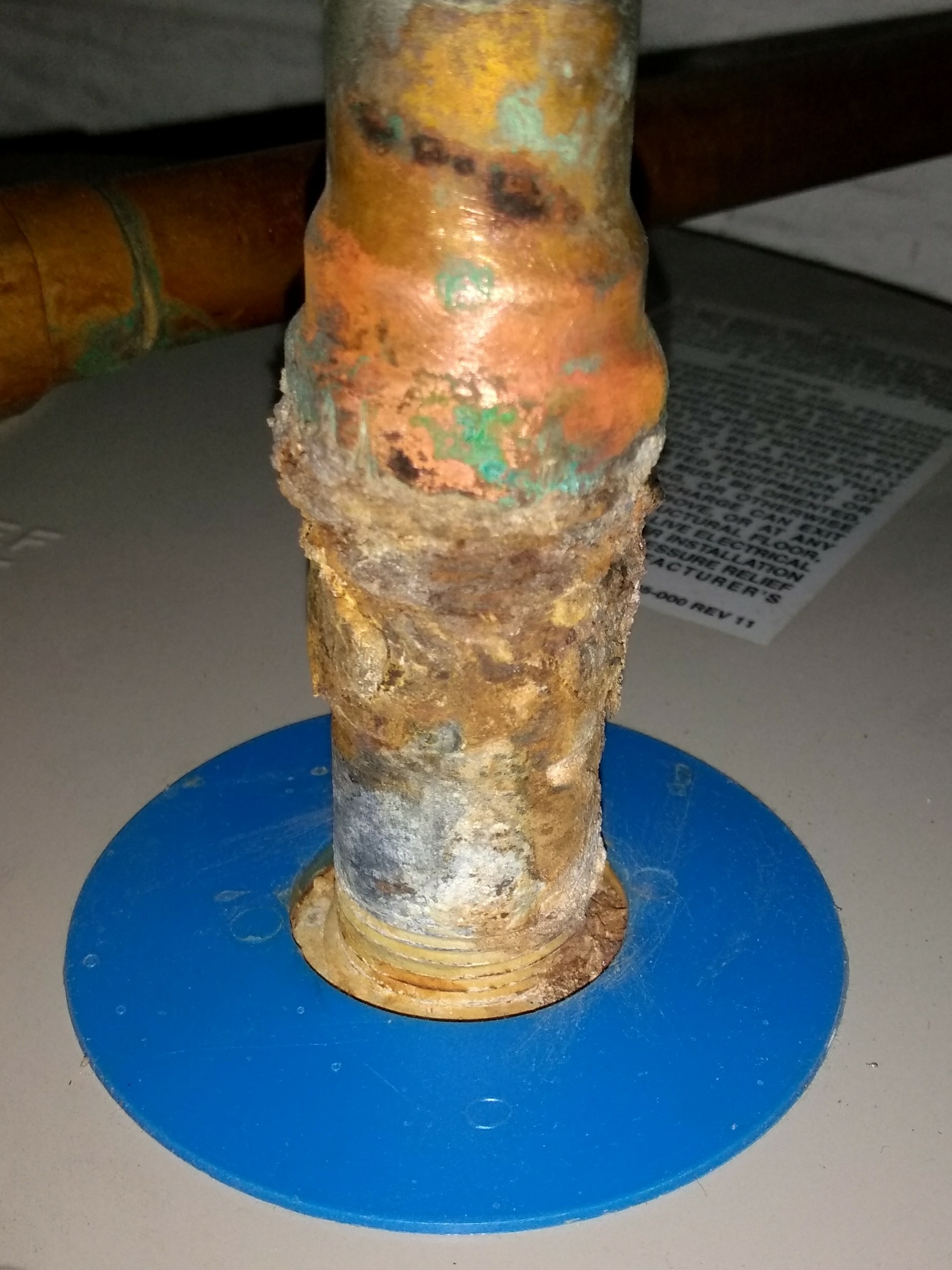I am pushing my basement finishing project off for a couple of years, so I will not be moving the water heater in the near future. Is this corrosion bad enough that I need to have it repaired before I end up with a flood?
UPDATE:
I cleaned up the joint with a metal brush. It looks like the buildup of rust and scale has actually sealed the joint up. Here are photos. I am not sure if I should just let it be now. I am scared that if I take the joint apart, the nipple will be damaged.





